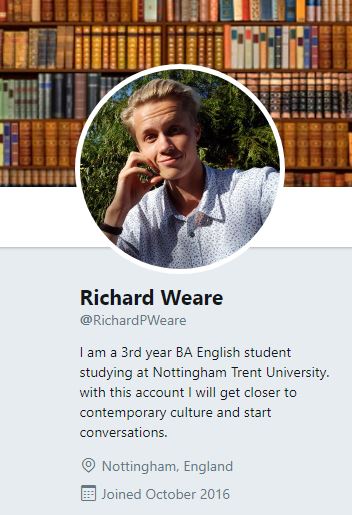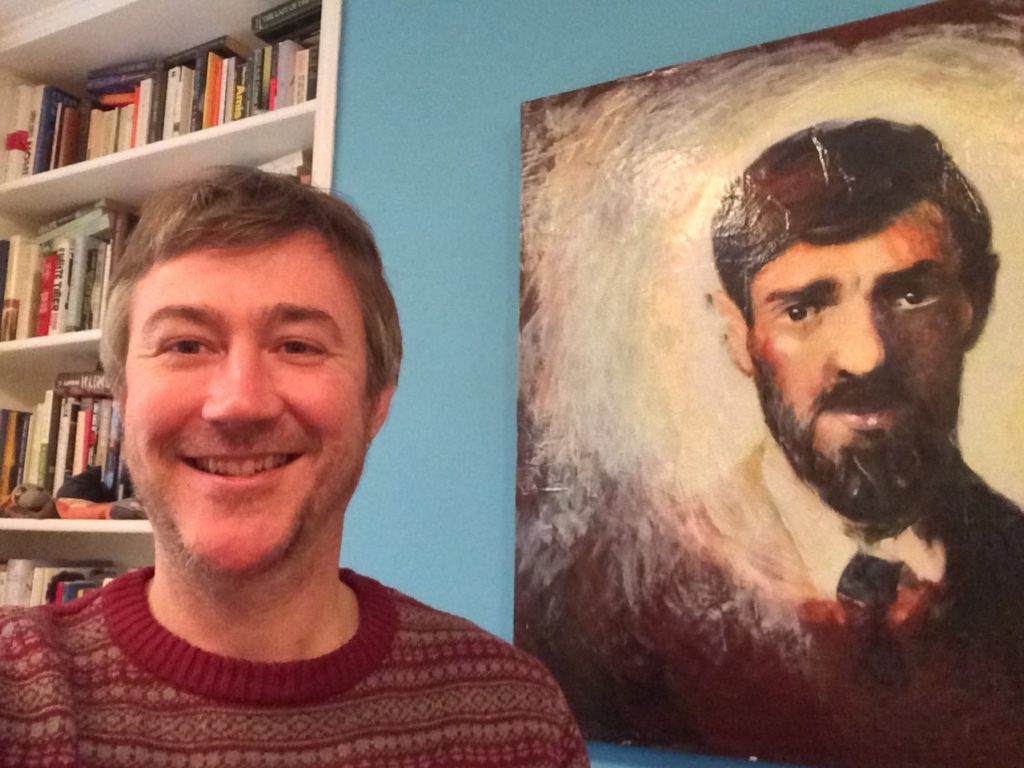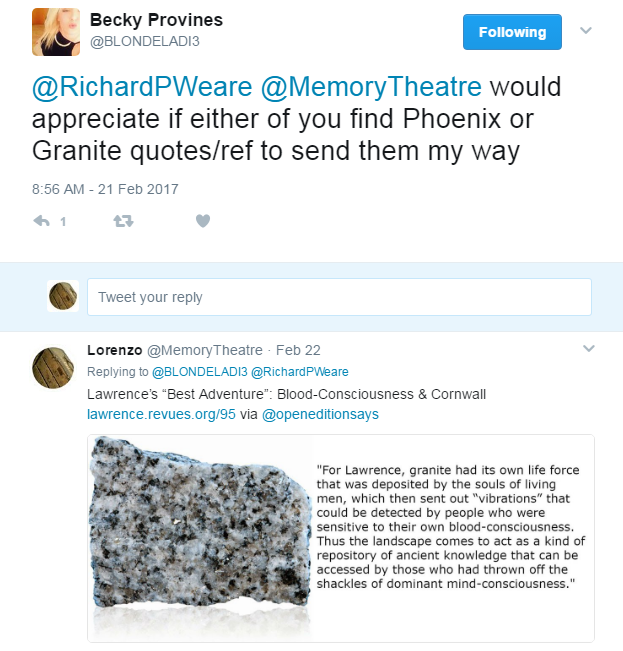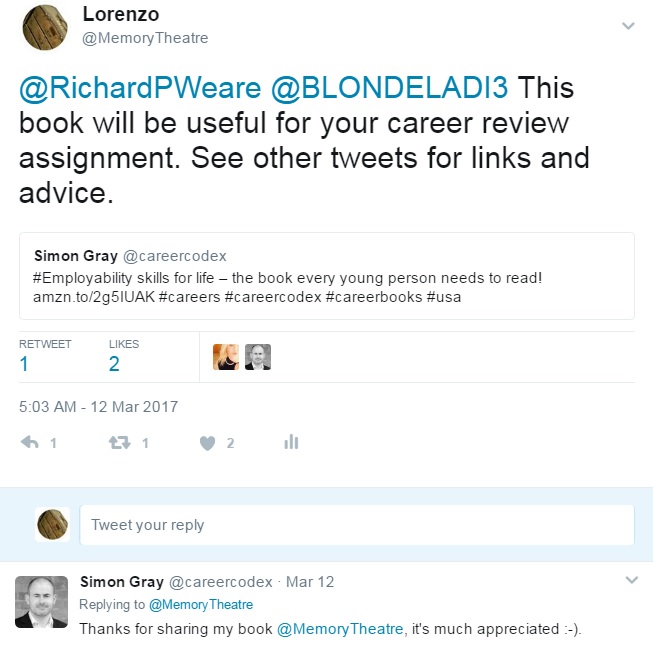James Walker is a Senior Lecturer in Digital Humanities in the School of Arts and Humanities at Nottingham Trent University. This blog post shares his experiences of using Twitter to communicate with students and the positive impact it has had.
Last term I trialled a new module ENGL30512 (English and Creative Industries Project) in response to our Curriculum Refresh framework. It’s available to third year single honour English students and functions as an alternative to the traditional dissertation. The aim is to give students experience of designing and creating a real-life multi-collaborative digital literature project. One integral element in this process is digital literacy and communication skills. Therefore we communicate out of hours via Twitter, a microblogging social media platform.

I have integrated Twitter into the module based on research by Ricoy & Feliz (2016) who found that Twitter can increase student participation, as long as students are given the technical knowledge. Active participation helps increase motivation and confidence which in turn creates a more gratifying learning experience.
In our introductory lesson students are shown How to set up a Twitter account with additional tutorials where needed. Although half of the class already have a Twitter account, they must create an additional account as the focus of these tweets is solely about the project rather than their personal lives. This teaches them about brand identity, as well as writing in a different register.
The biggest challenge is enabling students to see ‘the point’ of Twitter. Therefore it is vital that they are given the necessary motivations to keep them engaged. To do this, they are presented with a series of specific tasks they must complete each week. This includes: creating a hashtag; tweeting with an image; joining in a trending topic; sharing a relevant hyperlink; getting 10 followers.
I allocate 10 minutes at the beginning of each class so that they can share their experiences. But I have already been monitoring this. Twitter enables you to create ‘lists’ of specific accounts and so I can monitor who is and isn’t engaging and give them a prompt where necessary. I can send them a direct (private) message or retweet their tweets in order to help build their confidence.
I reassure students that Twitter isn’t a replacement for email. It’s a way of coping with it. My inbox is swamped and I only check it when I’m at my desk whereas I can easily access Twitter on the go. Knowing that I will respond pretty quickly reassures them that I care, and that what they have to say is valued.
I found that after 4 weeks of the module, students started to tweet to me more often, asking questions, sharing links, asking what I thought about an article. These informal conversations not only helped build up their knowledge around our subject area but enabled me to give them individual support on specific areas of their studies. It has also helped to bring the group closer together as the simplicity of Twitter enabled them to communicate with each other more frequently.
Twitter is also a useful resource for staff. The implementation of a synoptic portfolio [in our school this is final year weighted assessment which asks students to draw on formal and informal experiences throughout the course] into modules is an area that many of us are unfamiliar with. I was able to utilise the wealth of experts on Twitter to support students in ways that I could not. Again, I created a ‘list’ called ‘employability’ and directed students to key thinkers who specialise in LinkedIn profiles and writing CVs such as @careercodex .
Twitter works for me because I have small classes, so communication is manageable. It’s drastically reduced my inbox, enabled me to provide additional support with very little energy, and helped create a real bond with my students. It also functions as an archive of the progression of a project and evidences student involvement for any future employers checking up on claims in a CV.
Ricoy, M,C., & Feliz, T. 2016. Twitter as a Learning Community in Higher Education. Educational Technology & Society, [Online]. 19(1), 237–248. Available at: http://www.ifets.info/journals/19_1/20.pdf [Accessed 1 August 2017].

James Walker (@TheSpaceLathe) is the author of digital literary projects The Sillitoe Trail and Dawn of the Unread. He teaches on two third year English dissertation modules. ENGL37605: Creative Writing Dissertation and ENGL30512: English and Creative Industries Project.
You can visit the project website at www.memorytheatre.co.uk or on Twitter @MemoryTheatre or Instagram @DHLDigitalPilgrimage


